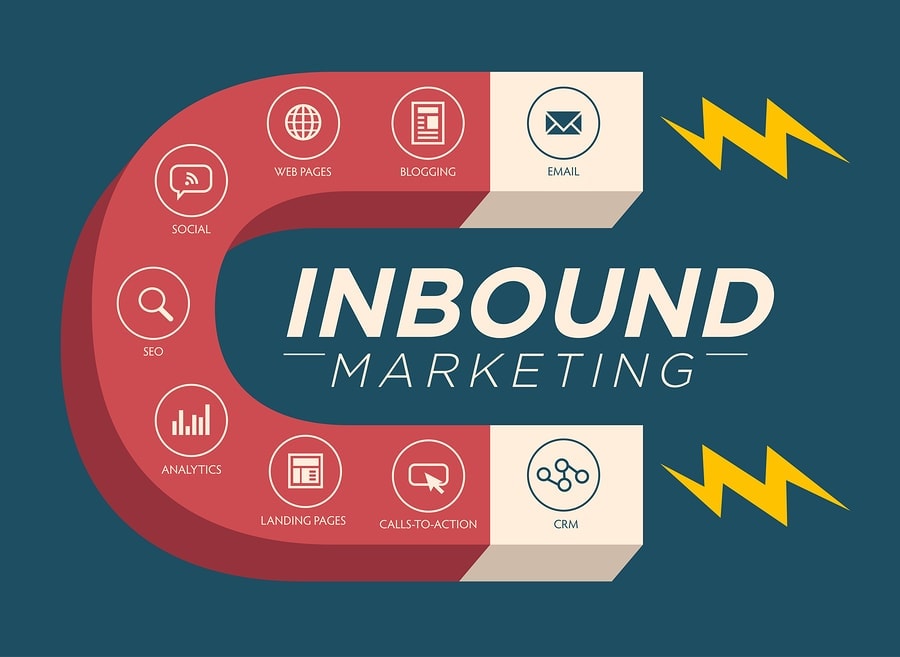What can inbound content marketing do for your business? Is inbound content marketing different from content marketing? What does this look like and what does it do?
That’s how many business owners start a conversation with us — a flurry of questions. There are many terms out there for the inbound content marketing strategy that brings quality leads in the door. There are also questions about what it does for businesses and whether a particular business can benefit.
The simple answer is that it would be unwise in today’s environment not to do some inbound content marketing. In this post, we’ll clear up some of the confusion surrounding inbound content marketing and explain how your business can benefit.
Inbound or Content?
You’ll often see marketing terms mixed and matched. “Inbound” and “content” clearly have different meanings, but in this context “inbound marketing” and “content marketing” are synonymous.
In today’s marketing world, inbound marketing is all about content — this is what attracts leads to your business, whether in the form of blogs, white papers, newsletters, webinars, videos, infographics, or social media posting.
In the past, TV, newspaper, radio, and billboard ads, little league sponsorships, and buying mailing lists were the primary way of getting the word out, connecting with potential customers, and gaining business.
But today it’s a different game. Media is everywhere, but there’s still only 24 hours in a day. This means that businesses must produce and distribute amazing and valuable content to get the attention of their customer audience. Best of all, inbound content marketing isn’t just for getting eyes on your brand. This strategy can nurture leads into conversions and customers, build up a loyal customer base, upsell your clients, facilitate customer service, and more. We find that almost every business can benefit from improving one of these areas of business operations, and that’s why inbound content marketing is valuable.
Building Great Content
To get started with inbound content marketing, you need content. This is the “bait” that starts the whole process, bringing in leads to your sales funnel, getting internet users to your webpage, or getting customers into your brick-and-mortar shop.
Quality matters a lot in this regard. Not just any bait will attract a prize-winning catch, and not just any content will attract qualified leads well-matched to your products or services.
Typically, content marketers look at who you are as a business, what you have to offer, and what your customers need and want. This leads to a strategy for crafting content that is valuable for your particular target audience. Everyone’s different. Some audiences need information, some want to be entertained, some want to find a service provider they can trust.
The types of bait, or content, used to attract customers also varies depending on the situation. In some instances, content can be produced and marketed to an audience on a regular schedule. Typically this is in the form of blog articles, case studies, product overviews, customer service information, videos, and more. In other cases, content marketers use “gated” content — high-value content products like white papers, ebooks, webinars, or custom infographics can be marketed to a target audience through a gateway page that asks for leads to trade their email or contact details in exchange for the content.
Getting Inbound Leads
Of course, creating the content is only half the equation. Businesses need a strategy not only for getting the content out to their customer base, but also tracking the effectiveness of their content marketing efforts, and a way to turn this audience into paying customers.
This is why we say “inbound content marketing.” A great piece of content won’t help your business very much if no one sees it — remember, your leads are buried under a firehose of media today, and they won’t see your content if it’s not marketed to them.
Today’s content marketers use some tools and tactics to make sure that their content marketing pieces find your audience and draw them into your orbit. Social media posts, paid and sponsored social media, PPC ads, email newsletters, lead magnets, PR distribution, professional partnerships, and more, all can be used to help get the word out. A series of content pieces can be crafted and distributed strategically, to nurture leads, bring them into your funnel, and turn them into closed sales. To track the effectiveness of various content pieces and strategies, marketers use tracking tools to find out what’s working and what’s not. Less successful efforts can then be shifted into more impactful strategies that are paying dividends.
Final Thoughts
So what can inbound content marketing do for your business? Offer valuable content to your customers and soon-to-be customers, helping them get the information they need to trust you with their business. Inbound content marketing goes out into the world to bring those customers to you, whether from social media, the web, or their email inbox. With the right strategy, inbound content marketing can grow your business and improve your current customers’ experience by serving them great content.
Still have questions about inbound content marketing? Call 313-338-9515 or email hello@kaleidico.com to learn how our full-service digital marketing agency can help you reach your content marketing goals.
